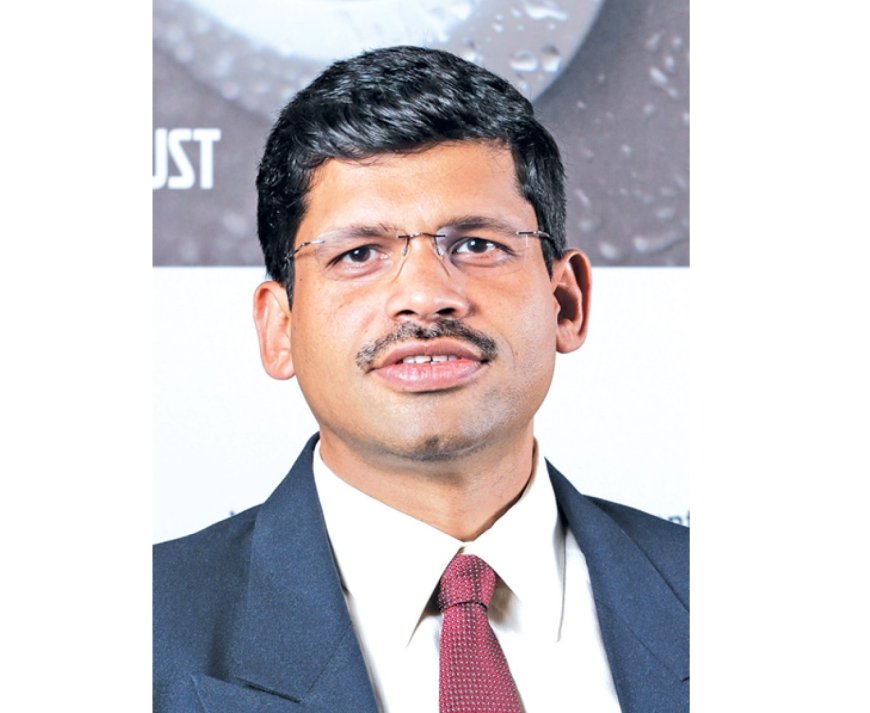The demand for construction equipment is likely to remain robust in the short to medium term.
Dimitrov Krishnan President, ICEMA and Managing Director, Volvo CE India While the economy is on a growth path in a post pandemic scenario, what is ICEMA’s outlook on the construction equipment (CE) sector? The Indian construction equipment industry has

While the economy is on a growth path in a post pandemic scenario, what is ICEMA’s outlook on the construction equipment (CE) sector?
The Indian construction equipment industry has seen a recovery in the current financial year as construction activity picked up in the country post the Covid-19 pandemic. As compared to a year-on-year degrowth witnessed in FY21, we have seen a 9 per cent growth during the period between April and November 2021 vis-à-vis the same period last year. Though FY2020-21 started with a somber note, the overall equipment sales have shown consistent month-on-month growth since May this year till October. However, the scenario seems to be changing in recent months with sales of construction equipment having witnessed a decline in November over the sales recorded in October this year. Various factors are responsible for this emerging trend. There has been erratic monsoon in some parts of the country which has led to a slowdown in construction activity, while the pace of road construction has seen a decline this year which has resulted in lower demand for certain types of equipment. Moreover, there are some logistics issues and sharp increase in steel prices which continue to adversely affect the growth of the industry.
As the economic recovery gathers momentum along with Government’s continued focus on infrastructure development, the demand for construction equipment is likely to remain robust in the short to medium term.
What do you think are the demand drivers for construction equipment sector in India?
As outlined in ICEMA’s Vision Plan 2030, the primary demand drivers for the Indian CE industry are roads, mining, and urban infrastructure. The roads sector accounts for 35-45 per cent of equipment demand, mining accounts for 20-30 per cent, and urban infrastructure accounts for 10-20 per cent of the total demand for CE in India. Large infrastructure projects undertaken by the government have fuelled this growth. Further, the NIP and the introduction of private participation in mining are likely to continue to drive the demand for CE. Going forward, new and alternate sources of demand will emerge and grow in prominence. Driven by strong demand growth related to improved mobility and access to water and power, end-use sectors such as water, irrigation, waterways, airports, railways (including metro rail) will drive Indian CE demand.
From the R&D point of view, what will be the trends in CE technologies in the couple of years?
The India CE industry is working on technology development on several fronts. The Indian Construction Equipment Manufacturers’ Association (ICEMA), through its expert panels on Technology & Sustainability and Manufacturing & Supply Chain comprising industry experts in the areas of smart manufacturing, smart factories, advanced technology, artificial intelligence, etc, plans to fast-track the adoption and usage of Industry 4.0 technologies in the construction equipment sector.
We are also working on advanced technology and digitisation to improve equipment efficiency, comfort, remote connectivity and safety of the construction equipment. In mining applications especially, there is an increased use of artificial intelligence by way of autonomous drive technologies globally. In fact, autonomous driving technology is expected to be implemented in heavy mining equipment such as dumpers much faster than in cars/automobiles. ICEMA’s technology panel also envisions the benefits of ‘smart technologies’ to accrue to the entire CE value chain in the future.
On the sustainability front, while we have already made significant R&D investments in aligning to the CEV 4 norms, we are working towards becoming CEV 5 compliant by 2024. We are also exploring transitioning to alternative fuels such as bio diesel.
What are the challenges that you foresee for the CE segment and what are your suggestions to iron out these challenges?
As highlighted in the CE Industry Vision Plan 2030, there are certain key challenges that need to be addressed to enable the Indian CE industry to realise its true growth potential and adopt advanced technology and digital solutions. Some of these challenges include limited long-term visibility on project pipeline, relatively low mechanisation levels in construction projects, lower export competitiveness compared with global peers, high dependence on import of high-precision components due to non-availability of mother technologies in the country, lack of ease of availability of low-cost and long-term funds, and no/limited mechanisms to encourage technology development in the CE industry via R&D.
During the current financial year, the Indian CE industry’s competitiveness was severely impacted by spiraling input costs, especially that of steel. The other challenges facing the Indian CE industry include increased logistics costs, limited market for localisation of components and the likelihood of devaluation of Indian currency impacting cost of imported components.
We are happy to see that the government introducing several new initiatives such as the Gati Shakti Mission and the launch of the National Bank for Financing Infrastructure and Development. These initiatives will help synergise infrastructure projects and increase the decision-making speed.
Hits: 61








